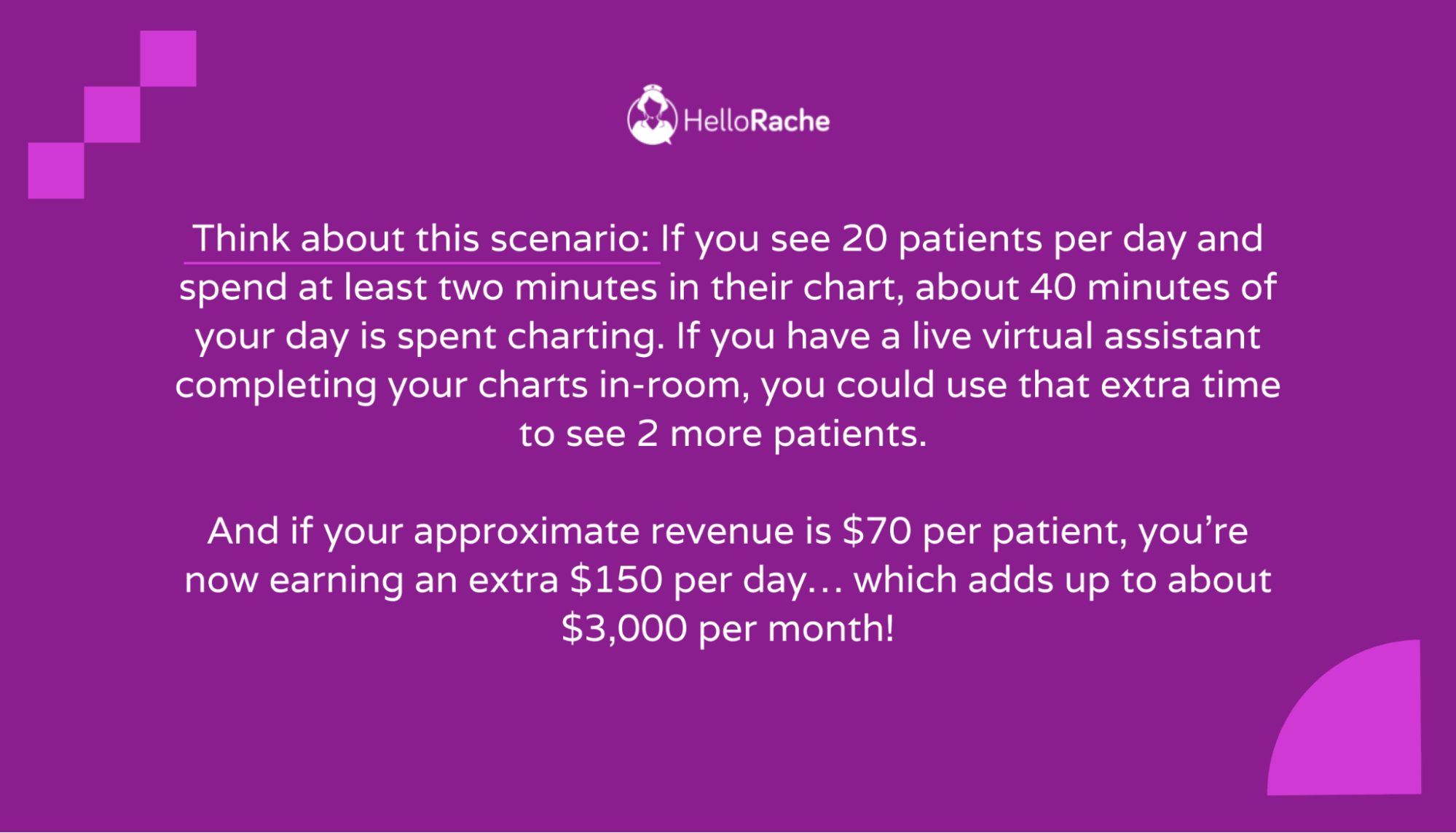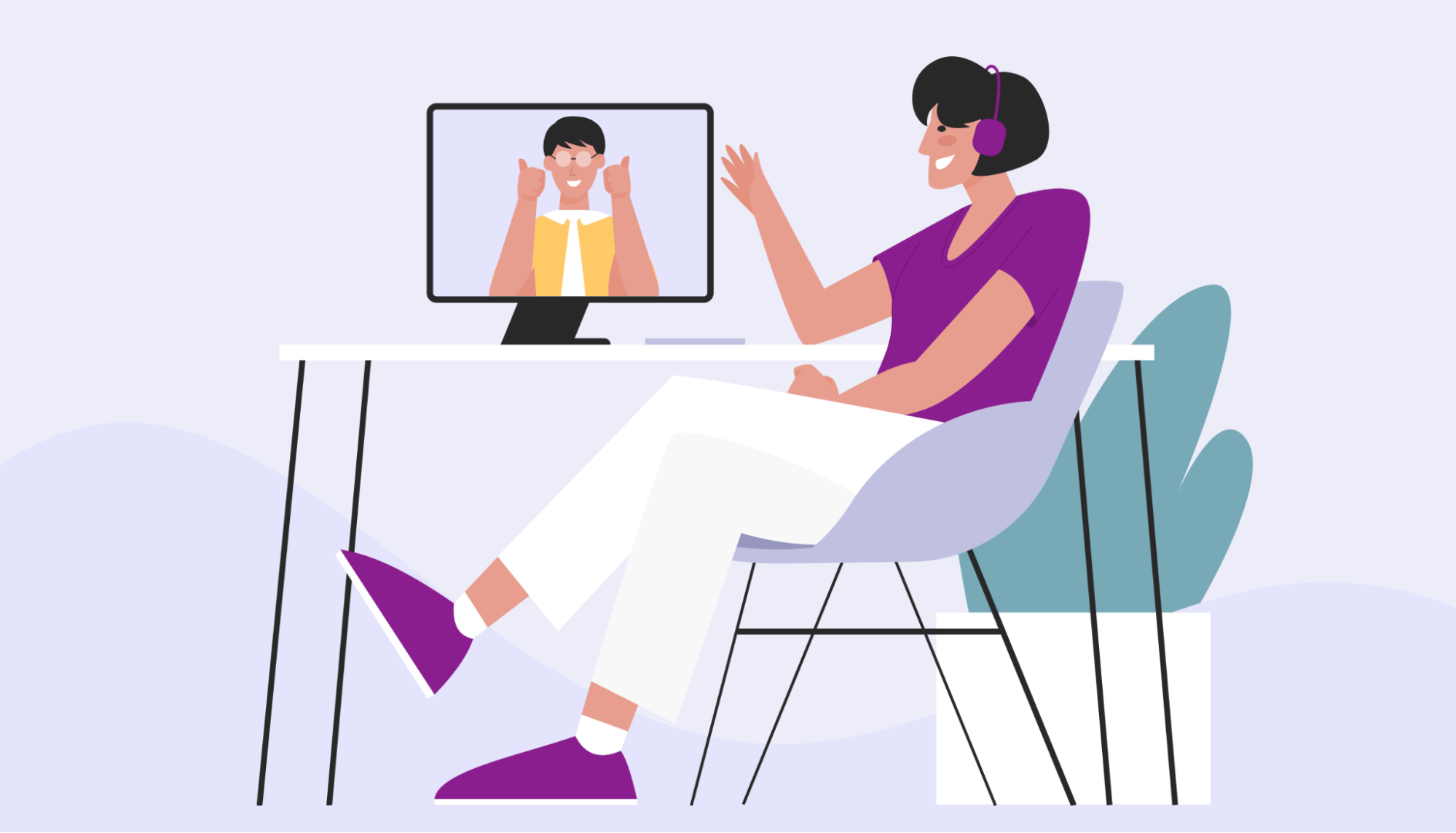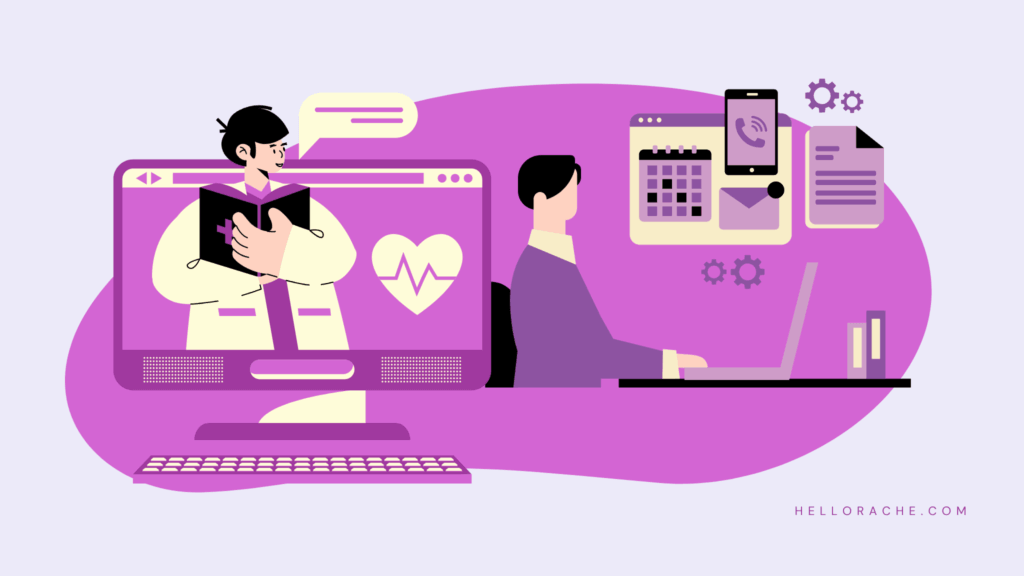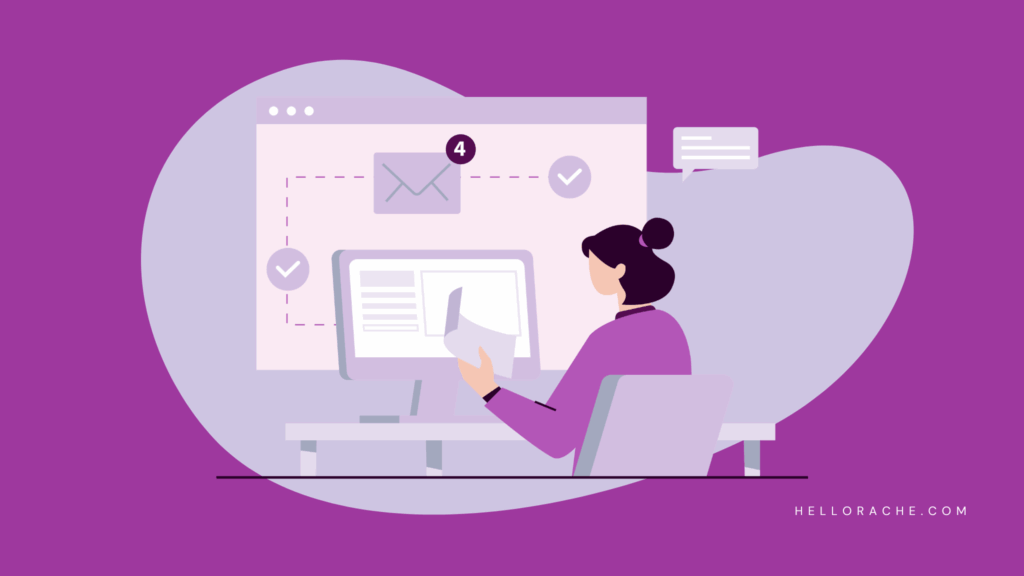Struggling to stay on top of the administrative duties piling up from your healthcare practice? Even for professionals who have in-house staff, it’s easy to get overwhelmed with the burden of in-room EMR documentation and other back-office tasks.
And when you’re overwhelmed, important duties can fall through the cracks — and you’ll often end up going home much later than you intended.
But did you know that you don’t have to rely on in-house staff to relieve this pressure? Let’s discover what remote assistants are, what they can do for you, and why you should consider hiring one for your healthcare practice today.
What is a remote assistant?
A remote assistant is similar to an in-person assistant. The main difference is that they work remotely instead of collaborating with you on location. You may see remote assistants called virtual assistants, too.

Many remote assistants work from home or from remote offices located in other countries, such as the Philippines. They can provide administrative support and other duties for your practice, even if they’re not in the clinic with you. You can interact with a remote assistant via video conference, chat, email, or whatever other communication methods work best for you.
Remote assistants support entrepreneurs to relieve them of repetitive, low-value tasks that don’t help them generate revenue. In the medical field, remote assistants can also support existing in-office staff who are overworked and can’t focus on high-value tasks.
Additionally, they can help clinics scale their operations by expanding reception capacity and cutting costs.
What does a remote assistant do?
Remote assistants can do nearly everything an in-house medical assistant can do.
Here are just some examples of how a remote assistant can help your practice:
- Use EMR/EHR systems: Virtual assistants who are specifically trained for the healthcare field can easily operate EMR/EHR systems. As a result, your staff spends less time in front of screens and more time with patients.
- Live in-room charting: No more staying late to finish client notes while worrying about missed details in your charting notes. A remote assistant can be in the room with you and your patient to perform live charting.
- Medical transcription: Turn rough notes into cleaned-up digital documents you can rely on.
- Receptionist duties: With the help of a computer or tablet, you can have a remote assistant manage the reception area or help out your in-house staff.
- Back-office tasks: Whenever you need anything done in the back office, you can delegate those tasks to a remote assistant so you or your staff can get home on time.
- Eligibility: Virtual assistants can perform the lengthy tasks required to verify patients’ eligibility for insurance purposes.
But that’s not all — a remote assistant can also handle:
- Referrals
- Insurance verification
- Phone calls
- Handling appointments
- Refill requests
- Faxing
- Prior authorizations
- Other custom office needs
If you want to see how a remote assistant could support your clinic, book a call with our team, and we’ll discuss your exact needs.
Benefits of hiring a remote assistant
Still on the fence about whether you should hire a remote assistant? Here are the five most important benefits you can get from a virtual assistant in your clinic.
1. Focus on what you do best and go home earlier
When you have one or more remote assistants on your team, you can easily outsource repetitive administrative tasks so you can focus on your profession. You spent many years working and studying to work in this field. Your potential gets wasted when you have to waste time on repetitive tasks anyone else could do.
Every minute you delegate to a remote assistant can be reinvested in the ways you see fit. That means no more staying late to finish up paperwork after working hours. You can finish your workday at 5 p.m. and get home to your family instead of staying until 8 p.m.
It also means you can focus on more important revenue-generating activities and make the most of your time. There are tasks that only you can do — those are the ones you should focus on.

Additionally, hiring remote help can help prevent burnout. You can do less of what you hate and more of what you love about your profession.
2. Cut overhead costs compared to an in-person assistant
Onboarding a new assistant in the office is expensive. Although it costs less than what your time is worth, you’ll still need to pay for:
- A higher salary to make up for the higher cost of living
- Taxes and benefits (depending on the size of your practice)
- Paid time off (depending on your state)
- Office space and equipment
- Recruiting, onboarding, and training — especially if you can’t find any local talent with the exact set of skills you need
For example, the average salary for an in-house administrative assistant in the US is $21 an hour. The exact number ranges from $19 to $23 per hour.
Let’s compare this to remote assistants. First, a virtual assistant doesn’t require any office space and equipment. You may need some space and equipment in the reception area, but it’s nothing compared to what an in-person receptionist would require.
When you hire from a specialized agency like HelloRache, you don’t need to go through the hassle of training your new remote assistants. That’s because they’re already medical professionals.
Plus, you only pay virtual assistants per hour worked. There’s no complicated calculation involved or taxes and benefits to consider. You only pay a flat hourly fee.
Finally, the hourly wage for a remote assistant is much lower than what you’d pay for local employees. That’s because the cost of living is lower overseas compared to the US.
3. Provide higher quality care
Remote assistants can dedicate themselves to keeping tabs on your patients.
Since they’re entirely focused on those tasks, they can do a better job of taking accurate notes and communicating effectively with patients.

Compare this to working alone — you have to simultaneously provide medical care, jot notes, remember everything about each patient, and so much more.
Your receptionist has to simultaneously greet your customers, handle billing, transcribe notes you took, answer the phone, and make phone calls to generate appointments and revenue, on top of other tasks that may fall to them.
When you’re not overwhelmed, you’ll provide a better service, and so will your in-house staff. But a remote assistant can perform administrative tasks better than you could because it’s their specialty — it’s not yours!
You can focus on care, and your in-house staff can focus on revenue-generating activities.
4. Not limited to your local talent
Growing your administrative team with local talent can be difficult. And it’s not just because their salaries are higher than what you’d pay overseas.
The reality is there are fewer people to choose from locally. Plus, your staff can easily get poached by your competitors, especially if you don’t pay them a competitive salary, or can only hire them part time.
You can access a much bigger pool of candidates when looking for remote assistants. Plus, Hello Rache assistants are already trained in HIPAA compliance.
5. Take on more patients
You can invest the time you save by hiring a remote assistant to onboard more patients for your medical, dental, and veterinary practice. Not only will you save time, but you’ll be able to generate more revenue.
You’ll have someone available to handle the administrative workload while you focus on serving all those new patients. Even if your in-house staff is currently overloaded, your remote assistant can pick up the slack for repetitive tasks once new patients come into your clinic.
Let’s consider the following to understand how much more revenue you can generate. Imagine you currently see 20 patients per day. You’ll spend at least two minutes in their chart without a remote assistant giving you a hand.
In total, that’s 40 minutes of your day spent charting.
How many additional patients could you help with those extra 40 minutes? If it takes you 20 minutes per patient, that means you’ll be able to see two more patients per day. But that’s only possible if you’re not doing the charting yourself.
Let’s say you charge $70 per patient visit. Getting two new patients per day is equivalent to $140 per day in additional revenue. Each month, that’s nearly $3,000 in extra revenue you’d be losing without a virtual assistant.

Of course, virtual assistants have an hourly wage — but at $9.50 per hour, that’s still a net profit of $64 per day for an 8-hour day. In total, that’s $1,280 in additional profit per month if you charge $70 per patient.
You’ll be able to take on even more patients if your virtual assistants take on more of your daily tasks. The above example is for 40 minutes saved per day, but imagine what you could do with 1-2 hours saved instead.
Types of remote assistants for medical, dental, and veterinary professionals
Not all remote assistants are the same. Some are generalists who can handle multiple types of responsibilities, but others specialize in certain fields.
At Hello Rache we pride ourselves in our ability to source and vet qualified medical talent to fill various remote positions for medical and veterinary clinics. All remote assistants get extensive training in specialty terminology for your field and have a background in a medical profession.
For instance, many of them are registered nurses. They also receive HIPAA training so you can remain HIPAA compliant at all times.
Here are three types of remote assistants to consider hiring for your practice.
Virtual scribe
The first type of remote assistant is a virtual scribe. Because they’re specialized in live transcription, a virtual scribe can provide live charting while you see patients.
You can bring your computer or tablet into the room with a patient and let the device sit in the background as you perform care. No matter where your virtual scribe works from, they’ll be able to transcribe everything that happens during the consultation.
Not only are virtual scribes more affordable than in-person scribes, but they’re also less intrusive and take up less space in the room. Many patients can become anxious when someone else is directly in the room, but it feels much less invasive when this person is on a screen.
Plus, you can fully focus on your patient instead of focusing your energy on remembering every interaction. You can be present in the moment and provide the best possible care.
Virtual receptionist
A virtual receptionist specializes in reception duties and adjacent responsibilities. They can either replace or support your in-house receptionists as your patients' first point of contact.
Whichever tasks you currently have associated with your reception department is a task your virtual receptionist can easily handle. They use Voice Over Internet Protocol (VOIP) software to integrate seamlessly with your clinic and provide the same level of care they would if they were physically in your practice.
Other duties a virtual receptionist can handle include but aren’t limited to:
- Greeting patients
- Confirming appointments
- Answering the phone
- Verifying insurance
- Processing payments for co-pays
- Coordinating with back office staff
- Interviewing patients instead of having them fill out a form
Virtual administrative assistants
A virtual administrative assistant is the closest you’ll find to an in-person administrative assistant. They’re administrative generalists in the healthcare field.
This type of remote assistant can perform administrative tasks in the back-office, reception, or anywhere you need support. For instance, they can handle general data entry tasks in your EMR systems, or they can help your staff deal with patient queries.
However, they can also take on some receptionist tasks if you don’t have a dedicated virtual receptionist.

If you’re unsure what administrative support you need, you can’t go wrong with a virtual administrative assistant. Additionally, a virtual administrative assistant who works with you for a long time can learn your processes and specialize in the exact tasks you need help with.
Find the best healthcare remote assistant for your practice
Sourcing local talent to assist you in your practice can be expensive, challenging, and competitive. Remote assistants help improve your workflow, save time, and make more money. Book a call with us so we can help you find the best remote assistant for the needs of your medical, dental, or veterinary practice.




